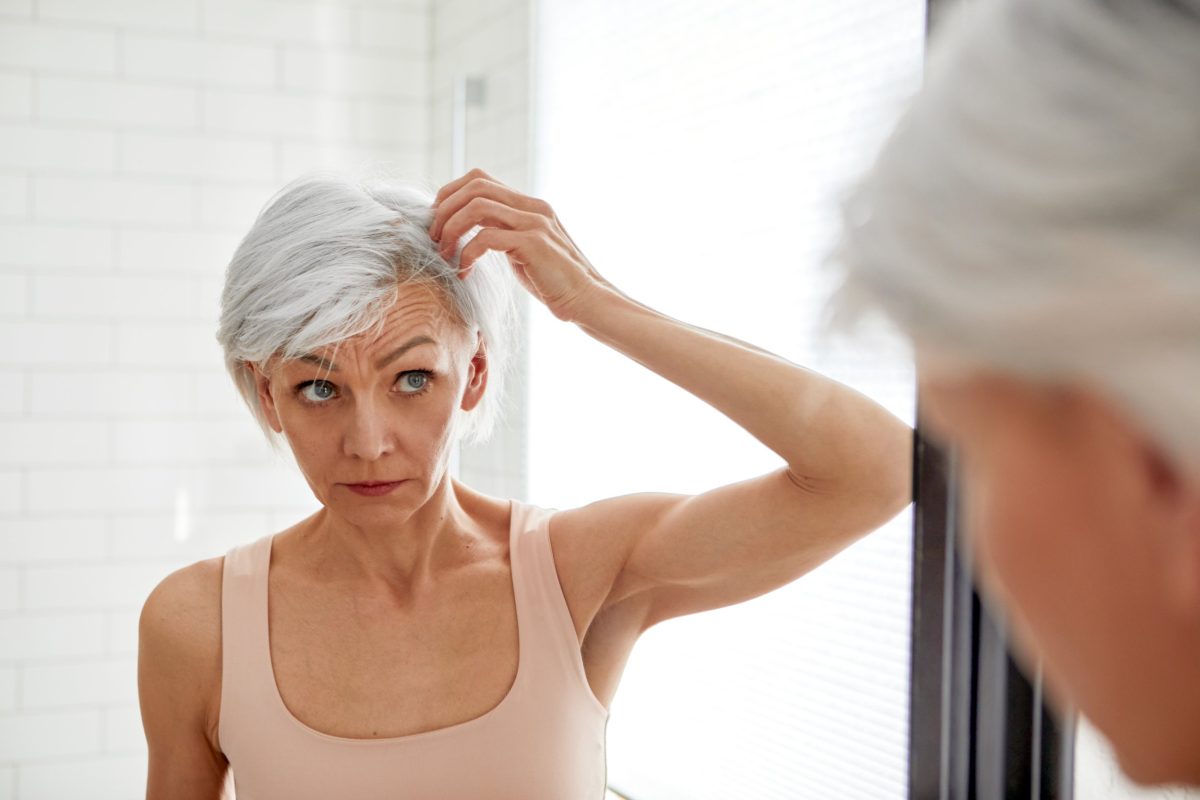Grey Hair? Avoid These Common Mistakes

The Rise of Grey Hair as a Fashion Statement
What was once considered the ultimate sign of aging is now being celebrated as a bold fashion statement. More people are embracing their natural grey hair, and celebrities like Meryl Streep and Jane Fonda have been seen rocking their silver strands with confidence. British Vogue’s editor, Sarah Harris, has also proven that grey hair can be just as stylish and chic as any other color. Even some younger individuals, such as American singer Phoebe Bridgers and former influencer Kylie Jenner, have chosen to dye their hair grey intentionally to make a fashion statement.
Trichologist Megan Brooks, who previously worked as a hair stylist, loves the look of grey hair. She has styled teenagers with grey streaks and helped adults rock full salt-and-pepper looks. According to her, the outdated belief that silver hair equals old age should be forgotten. Online, the trend continues with “greyfluencers” and “silver sisters” gaining popularity for embracing their natural grey hair.
Despite this growing acceptance, there are still many misconceptions about grey hair. Some people wonder if they should cover it up, how often they need to visit the salon, and whether they can delay the greying process. Others question if they need to change their haircare routine. These concerns were explored by experts in an interview with The i Paper, who provided insights into what we should really do with our hair as we age.
Common Myths About Grey Hair
One of the most common myths is that grey hair is solely associated with aging. However, Wes Sharpton, a hairstylist at Hairstory, explains that grey hair is simply a result of pigment loss. “I’ve seen clients in their twenties with grey streaks—it’s genetic,” he says. Similarly, trichologist Megan Brooks adds that there is no specific age when grey strands begin to appear. Some people may start seeing them in their 20s, while others might not find any until their 50s.
Another myth is that stress causes grey hair. While stress itself doesn’t directly cause greying, it can speed up the process. Brooks explains that when stressed, the body produces hormones that may weaken the cells responsible for hair color, leading to earlier greying. However, genetics remain the primary factor.
There is also a belief that sun exposure can accelerate greying. While the sun can lighten hair, especially with excessive exposure, it is not responsible for causing grey hair.
What We Get Wrong About Grey Hair
One of the most persistent myths is that plucking a single grey hair will cause three to grow back in its place. This is not true, according to Brooks. However, pulling out grey hairs can damage the follicles, potentially preventing future hair growth or merely delaying the appearance of another grey strand.
If someone wants to remove grey hairs, there are better alternatives. Brooks recommends visiting a hairstylist every six weeks for a touch-up to maintain a seamless blend, though this can be extended to eight weeks for those with slower hair growth. For quick fixes between salon visits, blending brushes and root touch-up sprays are effective options. Sharpton also warns that some products may streak when exposed to sweat or heat, so it's important to be mindful of environmental factors.
Semi-permanent hair dyes are another option for covering grey hair. Brooks suggests using a dye one to two shades darker than your natural hair color and applying it to the roots before spreading it down with a comb. This method works well for those without time for a salon appointment. However, she cautions that those with dry hair or sensitive scalps should look for dyes with less than 2% p-Phenylenediamine and include moisturizing ingredients like argan or coconut oil.
Caring for Grey Hair
Grey hair tends to be coarser, drier, and more prone to frizz due to lower melanin and oil production. It requires a different care routine compared to colored or darker hair. Brooks emphasizes the importance of gentle washing, deep hydration, and minimizing heat use. She recommends using sulphate-free moisturizing shampoos and patting hair dry with a microfibre towel or air drying. If heated tools are used, keep them at 50 degrees Celsius and apply a protectant spray.
Using wide-tooth wooden combs or boar bristle brushes can help prevent breakage. Cos Sakkas, global creative director at Toni&Guy, also suggests using conditioning masks weekly and getting regular trims to manage split ends.
Diet plays a role in delaying further greying, though it cannot reverse existing grey hair. Brooks notes that deficiencies in vitamin B, folic acid, and biotin are linked to early greying. Sakkas advises eating plenty of healthy fats like avocados and nuts, along with protein-rich foods and leafy greens to boost iron intake.
Embracing Grey Hair
Ultimately, grey hair should be embraced, enjoyed, and enhanced. As Sakkas puts it, “It’s a beautiful tone that showcases our journey in life.” Whether you choose to cover it or let it shine naturally, grey hair is a symbol of individuality and personal style. With the right care and attitude, it can be a powerful expression of self.

Comments
Post a Comment